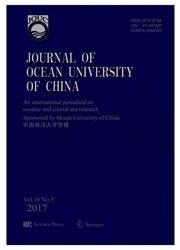

 中文摘要:
中文摘要:
不同饲料和饲喂方式对生长性能的影响,肉质和粪便粘度的大西洋鲑鱼(大西洋鲑L.)在循环水养殖系统(或作为)的影响。鱼(1677克+初始体重157克)饲喂四商品饲料(农产鲑鱼NS,阿勒金银,斯克雷廷鲑鱼SS和哈特你们HY)两种饲喂方式(80%和100%饱食)78 d.结果表明,鲑鱼的特定生长率(SGR)和增重率(WGR)显著受饲料种类和饲养制度(P<0.05)。饲料转化率(FCR)各0.93和3.40之间,这是由饲料类型显著影响(P<0.05),并增加饱满度略有提高。消化酶,包括蛋白酶,脂肪酶和淀粉酶也明显受饲料种类和饲喂方式(P<0.05),与饱食度增加。肉品质的维生素E,羟脯氨酸(Hyp),液体丢失和肌肉pH值的组间差异有统计学意义(P<0.05),范围从26.67到29.67,虽然没有明显的区别是在粉红的发现。粪便粘度不同的疗法均无显著差异,但在100%饱食组发现的改进。从目前的实验中,可以得出结论,无论是进料式和进料制度,可以影响重要的质量属性的大西洋鲑鱼。
 英文摘要:
英文摘要:
The effects of different feeds and feeding regimes on growth performance, flesh quality and fecal viscosity of Atlantic salmon (Salmo salar L.) in recirculating aquaculture systems (R.AS) were investigated. Fish (initial body weight of 1677 g+ 157 g) were fed with four commercial feeds (Nosan salmon-NS, Aller gold-AG, Skretting salmon-SS and Hart ye-HY) in two feeding regimes (80% and 100% satiation) for 78 d. The results showed that salmon specific growth ratio (SGR) and weight gain ratio (WGR) were significantly affected by feed type and feeding regime (P〈0.05). Feed conversion ratio (FCR) varied between 0.93 and 3.40, which was significantly affected by feed type (P〈0.05), and slightly improved with increased satiation degree. The activities of digestive enzymes including protease, lipase and amylase were also significantly affected by feed type and feeding regime (P〈0.05), increasing with satiation degree. Flesh qualities for vitamin E, hydroxyproline (HYP), liquid loss and muscle pH among all groups showed significant differences (P〈0.05), ranging from 26.67 to 29.67, while no obvious difference was found in flesh color. Fecal viscosity for different treatments showed no significant difference, though improvement was found in 100% satiation group. From present experiment, it was concluded that both feed type and feeding regime can affect the important quality attributes of Atlantic salmon.
 同期刊论文项目
同期刊论文项目
 同项目期刊论文
同项目期刊论文
 期刊信息
期刊信息
